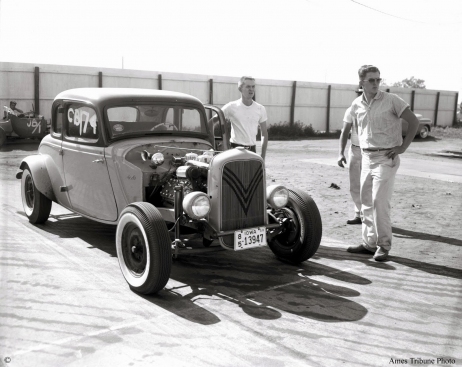Hot Rods started growing in popularity around 1950. After the second world war America was ready for some fun which included it’s love for the automobile. The fifties represented a generation of rebels like James Dean who starred in “Rebel Without A Cause”. The fifties also popularized drive-in movies, Coca Cola and jukeboxes. In the early fifties the typical hot rod enthusiast ran their machine with dual carbs and milled heads.
With growth of interstate highways across the country more people were loving the road trip scenario. The horsepower battle between Cadillac and Oldsmobile began with Chrysler engineering the 180 HP V8 in 1951. Car shows and drag racing became serious business.
Hot Rodders in the fifties belonged to clubs and wore leather jackets, Levis, a T-shirt and engineer boots. The first car club formed in 1932 and set the bar for future clubs. They were called the “Outriders” and labelled as Loners.
Other clubs came along with names like Hot Irons, Dukes, Crank Busters, Road Lords to name a few. These clubs brought hot rodders together to talk shop, find parts and share ideas amongst the members.
Hot rodders in the fifties received bad press being called outlaws of society. They used airplane runways occasionally turning them into drag strips. Reputation was everything to most hot rod club members so they made sure their public image was not tarnished with bad driving habits around the public. Their creed was to help other motorists in trouble.
They did not act as an individual but as a representative of the Hot Rod movement as a whole. After helping someone out they handed over a card that read: “You have been assisted by a member of (name of club) a hot rod club dedicated to safety.”
In California Hot Rodding was taking off and spreading across the country. In 1950 the editor of Hot rod Magazine using his column to announce and promote a hot rod association. The NHRA was born in 1951. Their mandate was to promote safety, sportsmanship and fellowship to all hot rod clubs involved. This in turn regulated the associations creating a higher standard which brought about greater acceptance from the press and public as well as more benefits for members.







